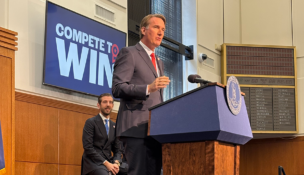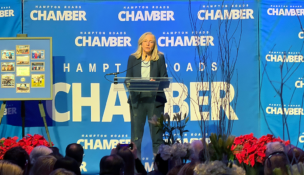Northern Neck firm aims to create IT jobs
John May wants to bring technology jobs to the Northern Neck.
May worked in the telecommunications industry in Northern Virginia for more than 30 years. Three years ago, he realized the benefits of working in a rural area after moving to Weems.
May discovered that an area along Route 3 in the Northern Neck has fiber-optic cable that can provide unlimited broadband capacity and speeds. “In places where you have broadband, you can write software anywhere,” he says. “You can support areas like Washington, D.C., Richmond, Dahlgren [Naval Surface Warfare Center] and Hampton Roads at a price that is less expensive.”
Today, May is the president and CEO of the Center for Innovation and Development (CID) in Kilmarnock. CID opened in April 2015 and now has eight employees. The mission of the nonprofit organization is to promote economic development and create jobs in the Northern Neck.
CID’s services include software development, user-interface design and back-office computing. “We are a high-tech hub,” May says.
He says companies can use CID as an extension of their facilities or they can contract with Advanced Network Systems, a for-profit entity created and supported by CID, for consulting or project services as well as customer development services.
CID also offers the services of Business Re-engineering Corp., another for-profit company it created as a HUBZone (historically underutilized business zone) business. “Federal contractors can get credit for doing business in a HUBZone,” May says.
He hopes that, while bringing jobs to the Northern Neck, CID will help U.S. companies avoid offshoring jobs to foreign countries. “I headed a company that had 100 people in India, so I am familiar with offshoring,” May says, adding there are disadvantages to offshoring, such as problems controlling product quality. “I’ve learned it’s better to keep work close to home.”
May says one advantage that companies would discover in using CID is the Northern Neck doesn’t have Northern Virginia’s traffic congestion. Employees are not sitting “in a car in traffic when they can be here working,” he says.
t
















